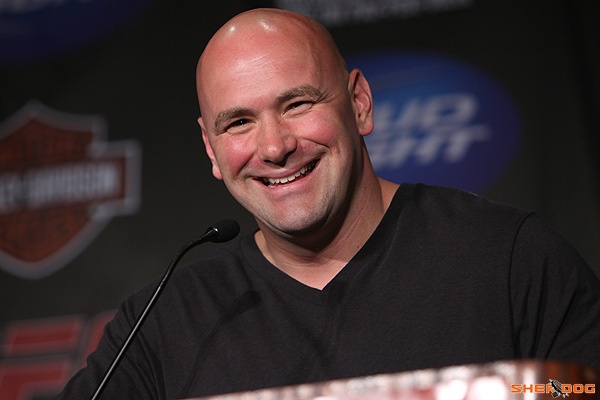The biggest story last weekend was the false alarm that a ballistic missile was going to hit the state of Hawaii, which sparked a massive public panic. Luckily, no missile ever detonated in Hawaii. Meanwhile, a figurative ballistic missile certainly struck the UFC.
In the course of a few hours on Saturday, Jan. 13, the UFC lost three marquee fights, including the headliner of an upcoming pay-per-view. UFC middleweight champion Robert Whittaker had to pull out of the main event at UFC 221 next month against Luke Rockhold due to injury. If that wasn’t bad enough, the UFC’s first “Fight Night” card of 2018 that took place on Sunday lost two bouts at the last minute when Zak Cummings was injured while preparing for his fight against Thiago Alves and Uriah Hall was hospitalized prior to weighing in for his fight against Vitor Belfort.
If these mishaps are an omen for how this year will go for the UFC, then, well, it’s not going to be a very good year. The mishaps also follow what is being discovered as a down year for the UFC in 2017. Ratings, event attendance and gate figures decreased across the board from the previous year. This information directly flies in the face of UFC President Dana White’s claim that 2017 was the UFC’s “best year by a longshot.”
You have to wonder how White can justify such an eye-rolling claim. It’s likely that White is factoring the boxing match between Floyd Mayweather Jr. and Conor McGregor into his statement, which, while technically valid, doesn’t cover up the real challenges the UFC itself currently faces.
Furthermore, the UFC’s first few fight cards of 2018 just aren’t very good. Yes, the next pay-per-view features title fights from the UFC’s two biggest weight classes. However, while the heavyweight showdown between champion Stipe Miocic and title hopeful Francis Ngannou and the light heavyweight clash between titleholder Daniel Cormier and challenger Volkan Oezdemir meet the “must-see” criteria, the remaining fights at UFC 220 on Saturday, Jan. 20, leave a lot to be desired.
The UFC 220 main card is rounded out with fighters like Calvin Kattar, Shane Burgos, Gian Villante, Francimar Barroso, Thomas Almeida and Rob Font. I’m sure they’re all nice guys, but while the fight between Almeida and Font could deliver fireworks and turn out to be an important bout for the UFC’s bantamweight division, the aforementioned fighters and others competing at UFC 220 don’t move the needle for anyone other than the very small number of dedicated, “hardcore” fans.
Whittaker’s injury and removal from UFC 221 next month results in yet another interim title fight, this time between Rockhold and Yoel Romero, who hasn’t fought since losing to Whittaker — in another interim title fight, no less — last year. The UFC 221 card is even leaner than UFC 220, with Mark Hunt standing as the only other recognizable name to most fight fans. Hunt usually delivers entertaining fights, but his match-up with Curtis Blaydes is a pay-per-view co-headliner. That speaks to how poor the UFC’s matchmaking and scheduling has been to start 2018.
There are two UFC Fight Night cards sandwiched between the pay-per-views, including a card on Fox. A card with a main event of middleweights Ronaldo “Jacare” Souza and Derek Brunson, while stylistically appealing, might result in that show receiving lower ratings than the last UFC on Fox card to air at the end of 2017.
To put it simply, there just isn’t very much to be excited about with the UFC right now. The product has never seemed more stale and oversaturated than it currently does. When we include last Sunday’s Fight Night card, there are six fight cards in the first two months of this year. Each card boasts roughly 11-12 fights, which means more than 100 fighters total are scheduled to compete. That’s a lot for fans to take in, and there aren’t that many interesting fighters to go around.
Unfortunately, the UFC is still beholden to its television deal with Fox as it continues to search for a new partner. So, for the time being, the demand for live UFC programming is still there. There are glimmers of hope on the horizon, such as possible future bouts featuring the likes of featherweight champion Max Holloway, Frankie Edgar, bantamweight champion Amanda Nunes, women’s featherweight champ Cristiane “Cyborg” Justino, interim lightweight kingpin Tony Ferguson and Khabib Nurmagomedov. Yet, unless major changes are made or a new star emerges, a lackluster and underwhelming product shows no signs of changing anytime soon.

